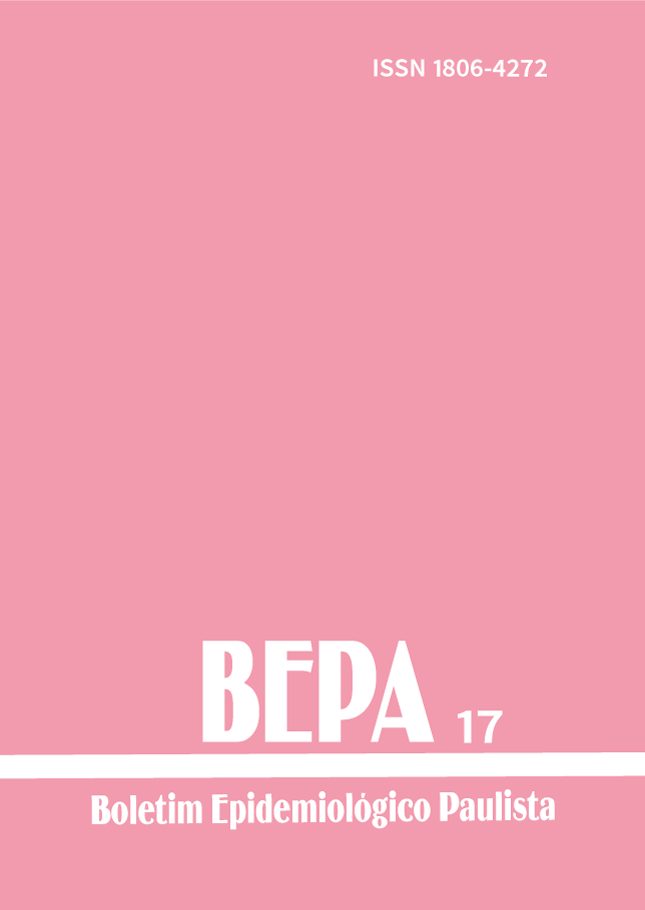Resumo
Referências
-APPELBAUM, P.C. Resistance among Streptococcus pneumoniae: Implications for Drug
Selection, Clin Infect Dis 2002;34:1613-20.
BASHIR, H.E., LAUNDY, M., BOOY, R. Diagnosis and treatment of bacterial meningitis. ArchDis Child 2003; 88: 615-620.
BAQUERO, F. Pneumococcal resistance to B-lactam antibiotics: a global geographic overview.Microb. Drug Resist., 1:115-120, 1995.
BLACK, S., SHINEFIELD, H., FIREMAN, B., et al. Efficacy, safety and immunogenicity ofheptavalent pneumococcal conjugate vaccine in children. Pediatr. Infect. Dis. J., 19: 187-195, 2000.
BRANDILEONE, M.C.C., DI FABIO, J.L., VIEIRA, V.S.D., et al. Geographic distribution ofpenicillin resistance of Streptococcus pneumoniae in Brazil: genetic relatedness. Microb. DrugResist., 4:209-217, 1998.6. BRANDILEONE, M.C.C., ANDRADE, A.L.S.S., DI FABIO, J.L., et al. Appropriateness of apneumococcal conjugate vaccine in Brazil: potential impact of age and clinical diagnosis, withemphasis on meningitis. J. Infect. Dis., 187:1206-1212, 2003.
CARVALHANAS, T. R. M. P. Situação epidemiológica das meningites bacterianas no Estado deSão Paulo. BEPA 2004, ano 1, nº 5. Disponível em: http://www.cve.saude.sp.gov.br. Acesso em22/4/2005.8. CAUGANT, D.A. Epidémiologie de Neisseria meningitidis, L'analyse des clones. Annales del'Institut Pasteur/Actualités. 1994;5:130-7.
CENTERS FOR DISEASE CONTROL AND PREVENTION. Control and prevention ofmeningococcal disease: recommendations of the Advisory Committee on Immunization Practices(ACIP). MMWR Morb Mortal Wkly Rep 2000;49:110.
CENTERS FOR DISEASE CONTROL AND PREVENTION. Control and prevention ofserogroup C meningococcal disease: evaluation and management of suspected outbreaks:recommendations of the Advisory Committee on Immunization Practices (ACIP). MMWR MorbMortal Wkly Rep, 46(RR-5):13-21, feb, 1997.
DIAZ, J.M., CATALAN, L., URRUTIA, M.T. et al. Trends of etiology of acute bacterialmeningitis in Chilean children from 1989 to 1998. Impact of the anti-H. influenzae type b vaccine.Rev Med Chil 2001; 129:71926.
DICKINSON, F.O., PEREZ, A E., GALINDO, M.A. et al. Impact of vaccination againstHaemophilus influenzae type b in Cuba. Rev Panam Salud Publica 2001;10:16973.
DI FABIO, J.L, CASTAÑEDA, E., AGUDELO, C.I. et al. Evolution of Streptococcuspneumoniae serotypes and PEN susceptibility in Latin America, SIREVA-Vigía Group, 1993 to1999. Pediatr. Infect. Dis. J., 20:959-977, 2001.
FOCACCIA, R. Meningites bacterianas - etioepidemiologia e meningites agudas vol. 1,cap.66.1;827-843.in: Veronesi R, Focaccia R. Tratado de Infectologia, 2ª ed., Atheneu , SãoPaulo, 2002.
FONSECA, C., MORAES, J.C., BARATA, R.B. O livro da Meningite: uma doença sob a luz dacidade. ed rev São Paulo: Segmento Farma, 2004, 201p.
IRWIN, D.J., MILLER, J.M., MILNER, P.C. et al. Community immunization programme inresponse to an outbreak of invasive Neisseria meningitidis serogroup C infection in the Trentregion of England 19951996. J Public Health Med 1997;19:16270.
KACZMARSKI, E.B. Meningococcal Disease in England and Wales. 1995. Commun Dis RepCDR Rev 1997; 7: R55-9.
LEPOW, M. L., PERKINS, B. A., HUGHES, P. A. et al. Meningococcal vaccines. In: PLOTKIN,S.A., ORENSTEIN, W. A., eds. Vaccines. 3rd ed. Philadelphia: W. B. Saunders Company, 1999, p.711-27.
MILLER, E., SALISBURY, D., RAMSAY, M.E. Planning, registration, and implementation of animmunization campaign against meningococcal serogroup C disease in the UK: a success story.Vaccines 2002;20(suppl 1):558-67.
PELTOLA, H. Worldwide Haemophilus influenzae type b disease at the beginning of the 21stcentury: global analysis of the disease burden 25 years after the use of the polysaccharide vaccineand a decade after the advent of conjugates. Clin Microbiol Rev 2000;13:30217.
PHLS Guidelines for public health management of meningococcal disease in the UK. CommunDis Public Health 2002; 5(3): 187-204.
SCHOLTEN, R.J., POOLMAN, J.T., VALKENBURG, H.A. et al. Phenotypic and genotypicchanges in a new clone complex of Neisseria meningitidis causing disease in the Netherlands,1958 - 1990. J Infect Dis 1994; 169: 673-6.
SNAPE, M.D., POLLARD, A.J. Meningococcal polysaccharide-protein conjugate vaccines.Lancet Infect Dis, 5(1):21-30, jan, 2005.
TUNKEL, A R., HARTMAN, B.J., KAPLAN, S.L. et al. Practice Guidelines for the Managementof Bacterial Meningitis. Clin Infect Dis 2004;39:1267-84
UDUMAN, S.A , ADEYEMI, E., EL-KHADIR, A. et al. A. Haemophilus influenzae type b stillremains a leading cause of meningitis among unvaccinated childrena prospective CSF analysisstudy. J Trop Pediatr 2000;46:3314.26. WORLD HEALTH ORGANIZATION. Control of epidemic meningococcal infection: WHOpractical guidelines. Geneva: WHO, 2000.
ZANELLA, R.C., CASAGRANDE, S.T., BRANDILEONE, M.C.C. et al. Characterization ofHaemophilus influenzae Isolated from Invasive Disease in Brazil from 1990 to 1999. Microbial DrugResistance 2002, 8 (1): 67-71.

Este trabalho está licenciado sob uma licença Creative Commons Attribution 4.0 International License.
Copyright (c) 2005 Telma Regina Marques Pinto Carvalhanas, Maria Cristina de Cunto Brandileone, Rosemeire Cobo Zanella
